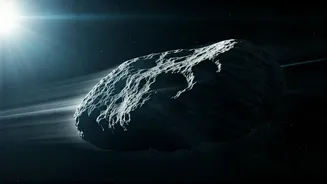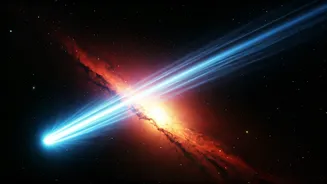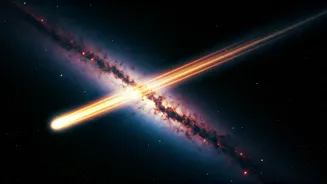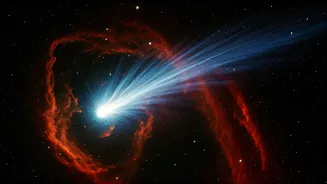The Planet Nine Mystery
The hunt for Planet Nine isn't a modern endeavor. This enigmatic world is a hypothetical ice giant planet. This theory emerged from anomalies observed
in the orbital patterns of distant objects within the Kuiper Belt, a region beyond Neptune. These objects, showing clustered orbits, sparked speculation that a massive, unseen gravitational force was shaping their paths. Though directly observed by astronomers, the combined gravitational influence of these smaller bodies wasn't sufficient to explain the observed orbital clustering. Consequently, the idea of Planet Nine emerged, a planetary body whose gravity could dictate their collective behavior. This unseen planet's gravitational pull provides a rationale for the behavior observed in Kuiper Belt Objects, which orbit in a way that suggests a far larger object is influencing their trajectory.
Hunting Astronomical Clues
Scientists are actively searching for Planet Nine. One method involves meticulous sky surveys. This method is like a cosmic treasure hunt, using powerful telescopes to scan vast areas of the sky. By analyzing the data collected, researchers search for telltale signs of Planet Nine's presence. These signs could manifest as subtle movements of stars or unexpected shifts in the orbits of known objects. Another approach leverages the gravitational effects. Although the planet remains unseen, its gravitational pull could influence the paths of objects in the outer solar system. By carefully tracking these objects, astronomers hope to pinpoint Planet Nine's approximate location. This pursuit involves developing complex models to predict how Planet Nine might affect these distant celestial bodies.
Orbital Dynamics and Impact
The existence of Planet Nine could reshape our understanding of the solar system's formation and evolution. According to current models, the formation of the outer solar system could have been dramatically altered by the presence of a planet with a mass several times that of Earth. Its gravitational influence might have sculpted the orbits of other planets, influenced the distribution of icy bodies, and even triggered periods of intense bombardment in the inner solar system. The discovery would also provide valuable insights into the formation of planetary systems. It would force astronomers to reconsider how planets can form and evolve in the extreme environments of the outer solar system. Planet Nine's presence could potentially explain the origins of comets and other icy objects. It might also clarify the presence of objects in unusual orbits.
Current Search Efforts
The search for Planet Nine is ongoing, with significant advancements in observational technology and computational methods. Astronomers are employing increasingly sophisticated telescopes and sky surveys, which enhances the probability of detection. Moreover, advanced computational models are being developed to predict Planet Nine's properties, which include its mass, orbit, and likely location. These models are crucial in guiding the search and refining the search parameters. The James Webb Space Telescope (JWST) is also poised to play a crucial role. This telescope's unparalleled infrared capabilities are designed to detect even the faintest objects. It can potentially spot Planet Nine, or provide critical information about the objects surrounding it, allowing scientists to confirm or reject its presence.
Challenges and Future
The hunt for Planet Nine faces several challenges. Due to its immense distance and likely faintness, finding the planet is an enormous task. The vastness of the sky adds another layer of complexity. However, scientists are dedicated, employing innovative techniques to improve the efficiency and accuracy of their search. In the future, new telescopes and observation campaigns are planned to increase the chances of detection. The use of more powerful instruments combined with sophisticated data analysis methods promises to enhance the likelihood of a breakthrough. The quest for Planet Nine promises to unveil secrets, providing clues to the formation of the solar system, and possibly revealing its hidden structure.













